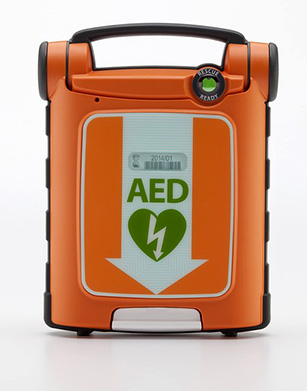SportsMed: 5 summer tips for athletes
It’s that time of year. Spring sports have wrapped up, the school year has ended and summer begins. As athletes continue to balance their sports schedules during the summer months through a variety of tournaments, summer leagues and club organizations, many physicians and clinicians have concerns about this level of sport specialization. Here are a few suggestions when transitioning into the summer months.
1. Make time for injury prevention.
Come summertime, athletes and their families are able to schedule their practices, games, vacations, camps and other various activities. What about scheduling workouts?
 Depending on the age of the athlete, this could be as simple as bodyweight exercises or as advanced as collegiate weightlifting. Ultimately, it needs to happen. I like to point out that an athlete would never go without practicing because it’s essential to improving their skills. To this same end, an athlete should strengthen and stretch the appropriate muscles because it improves the function of their body, which, in return, also improves their skills. Research supports dynamic-movement based muscular fitness training for neurological training, motor skill acquisition, enhancing motor performance and reducing sport-related injuries.
Depending on the age of the athlete, this could be as simple as bodyweight exercises or as advanced as collegiate weightlifting. Ultimately, it needs to happen. I like to point out that an athlete would never go without practicing because it’s essential to improving their skills. To this same end, an athlete should strengthen and stretch the appropriate muscles because it improves the function of their body, which, in return, also improves their skills. Research supports dynamic-movement based muscular fitness training for neurological training, motor skill acquisition, enhancing motor performance and reducing sport-related injuries.
2. Enjoy recreational play.
Research consistently proves that focusing on one sport at a young age can be too much for the body. Performing movements that differ from a specific sport are more likely to reduce the young athlete’s risk of injury. It’s important for kids to enjoy neighborhood games such as tag, kick the can and other games. In recreational play, kids also don’t have to worry about getting benched or other concerns they might have in interscholastic sports.
3. Drink enough water.
With the summer months comes intense heat. Athletes often neglect drinking enough water, especially when there may be clouds in the sky or a light breeze. The American Academy of Pediatrics suggests coaches, athletic directors and other staff should “provide and promote consumption of readily accessible fluids at regular intervals before, during and after activity to offset sweat loss and maintain adequate hydration while avoiding over-drinking.” Additionally, they suggest roughly 3 to 8 ounces every 20 minutes for 9- to 12-year-olds and up to 34 to 50 ounces per hour for adolescents to minimize sweat-induced body-water deficits during exercise.
4. Eat well.
Proper nutrition while active in athletics helps enhance performance by reducing the onset of fatigue, and it aids in recovery. An athlete should consume a combination of all three macronutrients: carbohydrates, protein and fats. Some dietitians suggest a diet for those between the ages of 4 and 18 years of age consisting of 45 to 65 percent carbohydrates, 10 to 30 percent protein, and 25 to 35 percent healthy fats.
Additionally, post-exercise food consumption within the first 15 minutes is important to replenish energy stores, increase muscle quality and repair any damage from the exercise bout. Meeting with a dietician to assess each athlete’s fueling needs can be very beneficial.
5. Be mindful of the sun.
The American Academy of Dermatology recommends avoiding sun exposure during peak hours — 10 a.m. to 2 p.m. Knowing this is difficult to do with tournaments and schedules, it’s even more crucial these young athletes use sunscreen. Experts suggest sunscreen be applied 15 minutes before sun exposure, seeking shade during halftimes and breaks, as well as the use of tents for prolonged day exposure. Not only can this reduce the risk of some skin cancers, but it also offsets the risk of dehydration and heat-related illnesses.
It’s difficult for an athlete to acknowledge the level of involvement they have in their prospective sports and the importance of self-care, especially in the summer months. Support from the coaching staff in achieving the above in addition to improving sport-specific performance can help create a well-rounded, healthy athlete.
Jen Morse, MS, CSCS, is the lead injury prevention specialist at The Micheli Center for Sports Injury Prevention. Learn more at www.themichelicenter.com.
References
Council on Sports Medicine and Fitness and Council on School Health, Bergeron MF, Devore C, Rice SG; American Academy of Pediatrics. Policy statement — climatic heat stress and exercising children and adolescents. Pediatrics. 2011;128(3):e741-e747.
Ford, P., De Ste Croix, M., Lloyd, R., Meyers, R., Moosavi, M., Oliver, J., et al. (2011). The long-term athlete development model: physiological evidence and application. J. Sports Sci. 29, 389–402.
Faigenbaum, A. D., Lloyd, R. S., MacDonald, J., and Myer, G. D. (2016). Citius, Altius, Fortius: beneficial effects of resistance training for young athletes. Br. J. Sports Med. 50, 3–7.
LK Purcell; Canadian Paediatric Society, Paediatric Sports and Exercise Medicine Section. Sport nutrition for young athletes. Paediatr Child Health 2013;18(2):200-202.
Merkel, D. (2013). Youth sport: positive and negative impact on young athletes. Open Access Journal of Sports Medicine. 4, 151-160.
https://www.aad.org/media/stats/prevention-and-care/sunscreen-faqs





